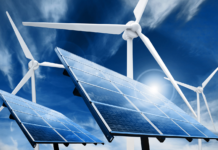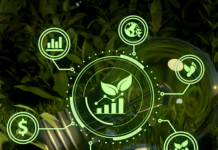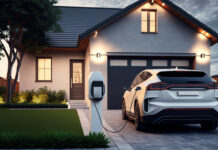
Who are today’s most “competitive” fuel retailers? The obvious answer is: the ones that get the most customers. What makes a customer choose them? That answer is less obvious.
Selling more gallons and c-store items in today’s market environment is only becoming more difficult. The typical U.S. fuel retailer has at least one competitive site only 0.016 miles away, and at least one and a half sites within a half-mile radius. Not only do customers have a lot of choices when it is time to fill up or stop for snacks, but new COVID-19 variants have made the demand for fuel more fickle than usual in most metropolitan areas. The Energy Information Administration estimates it will take years for fuel sales to return to 2019 levels, if ever.
The retailers that are winning the market today have become laser-focused on the factors that drive a customer to choose them. They also accept that those factors are different from what they once were, and that they need to go beyond the “traditional” in oil and gas to outmatch their competition.
Getting the customer’s attention
Price is the number one factor that influences a customer’s buying decision. Retailers use a number of variables to inform their public sign price, like fuel production costs, fees and taxes, the perceived value of the fuel brand, the store location and the services offered. But most importantly, they base their pricing on their nearby competitors’ sign price — dropping, raising or matching their own price while sacrificing margin.
Consumers in 2021 are more price-aware than ever, with mobile apps on their cellphones that show them real-time pricing and influence their purchasing decisions by routing them right to the lowest price. Competitive retailers have embraced this behavior shift and have moved beyond the physically limited reach of their public sign price. By taking advantage of any of the various online marketplaces that connect consumers and merchants, fuel retailers are putting their sites right in the palms of customers’ hands and winning those customers where they are — online and driving in their cars.
This is different from branded apps that reach a retailer’s existing customer base. By participating in a larger “marketplace,” retailers are listing their business in a place that customers already use to decide where to buy, which introduces their business to people they’ve never seen before and dramatically increases their exposure.
Getting the customer to choose you
With this increased exposure, retailers have to find a way to differentiate their price in the most profitable way possible.
Instead of relying on margin-sacrificing sign pricing strategies, today’s most successful retailers use digital tools to competitively price for every customer. They offer personalized, margin-bound incentives on each gallon — delivered through something as simple as a mobile app — to change customer behavior and encourage them to choose their site over the competition. This kind of personalization protects a retailer’s margin as they grow.
While some of the most sophisticated retailers do this on their own, using the data they already have, most retailers spend so much time on providing an exceptional customer experience that they outsource this process. It helps get new customers to choose them, regular customers to buy from them more often, and customers on-site to go to higher profit centers inside their convenience store.
Keeping the customer for the long term
The next challenge is to bring customers on-site as often as possible. Loyalty programs are the most commonly used tool for retaining customers and increasing their overall spend. In the past, loyalty programs focused on a standard cents-per-gallon discount every time a customer fills up at their station. Over time, these programs have advanced to offer more personalized discounts and offers, including discounts on food purchases or different grades of fuel.
In an analysis of 1.7 billion fuel and c-store transactions nationwide, we see that customers use fuel loyalty programs for only 9% of all their purchases. For these transactions, loyalty programs do great work to encourage customers to increase their spend. In fact, an analysis of 30,000 loyalty program customers nationwide found they do spend 25% more after they join a loyalty program. However, it is unclear whether this is profitable for retailers — meaning that this increased loyalty spend may still be less than what retailers are spending on the loyalty program itself.
The other 91% of transactions nationwide that are not attributable to a loyalty program represent a tremendous opportunity for retailers. Going back to our discussion on “Getting the customer to choose you,” using complementary tools that bring more customers into the fold allows retailers to close in on the 91% and convert them to loyal customers. By this logic, there should be as much investment in reaching new customers as there already is with retaining existing ones.
Overall, today’s market challenges present an opportunity to think differently about business. Customer buying decisions are most heavily influenced by price, and the tools retailers have used to win customers to date have gotten them far. Providing new and existing customers with a personalized experience is the best way to earn proven profit and outmatch the competition.
About the Author: Alex is an ardent technologist, product developer, entrepreneur, and investor who has spent 18 years developing products that have transformed industries.
As co-founder and CEO of GetUpside, Alex is working to personalize brick-and-mortar commerce to help communities thrive. The GetUpside team has helped earn hundreds of millions of dollars in profit for merchants and cashback for users.
Prior to GetUpside, Alex served on Opower’s executive team as the Senior VP of Product & Engineering. There he led the company’s product development teams, including engineering, product management, user experience, services, and analytics.
As an investor, Alex has served as a Partner at Khosla Ventures, NEA, and now at Builders VC. Some of his investments include Climate Corporation (acquired by Monsanto) and Skybox (acquired by Google).
As a product manager, Alex began his career making big impacts at Google, and before that, at Procter & Gamble. At Google, Alex built the agency display advertising team, created Google’s next-generation third-party serving and targeting system, and also led Google’s acquisition of DoubleClick. At Procter & Gamble, Alex worked in brand management and product development roles, leading the development and launch of three never-before-seen products.
Alex holds an M.B.A. with distinction from Harvard Business School and a B.S. in Chemical Engineering with honors from Lehigh University.














